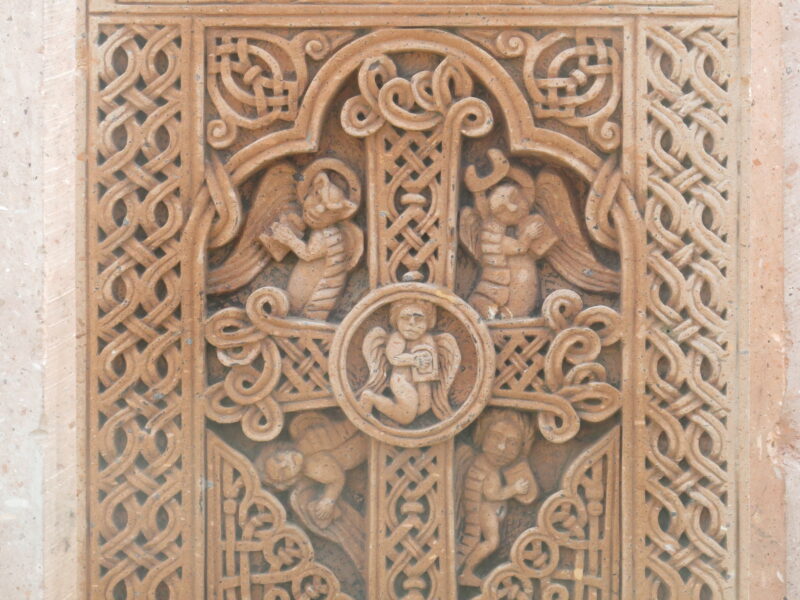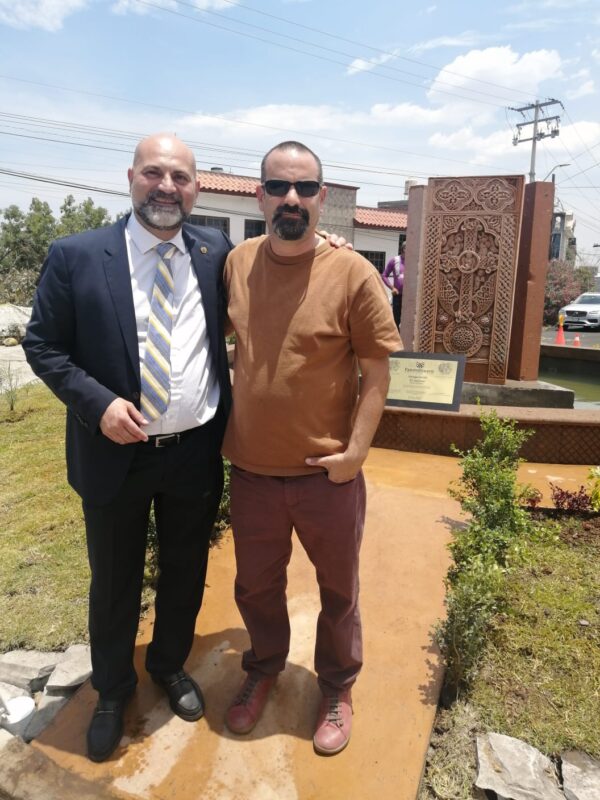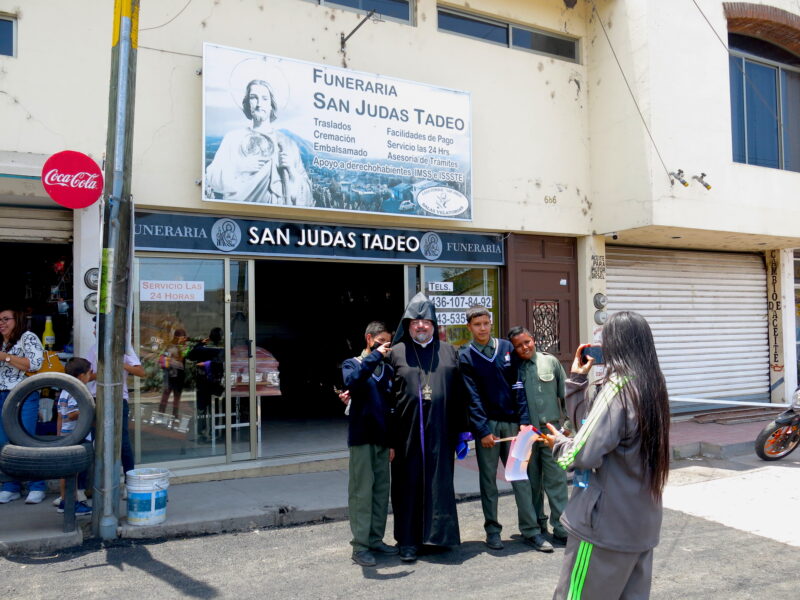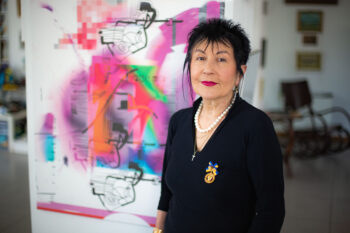PANINDICUARO, Mexico — On Saturday, April 22, 2023, as part of the 108th anniversary of the Armenian Genocide, three khachkars [cross stones] were inaugurated in a roundabout (traffic circle) in the town of Panindícuaro, in the state of Michoacán, located in central-western Mexico.

Under the patronage of Jack and Diamandula Sahakian and their family, the khachkars were made in the town of Tlalpujahua – also in the state of Michoacán – by the master craftsman Rigoberto, and starting on this Saturday, they have become the first to be exhibited in a public space in Mexico.

Then why in this town were three khachkars installed? Jack Sahakian tells me that the reason has been his friendship with Mayor Manuel López Menéndez, who has invited him to invest in the town, which has around 18,000 inhabitants. And also because he has been coming to this place for many years and has always enjoyed its climate and the warmth of its people. In addition, his father Sarkis Sahakian (who died in August 2016) accompanied him when he made business visits and sat in the Central Plaza where he observed the broken church clock. Sarkis remarked that he would provide the necessary support for the clock to be fixed – a project that, despite the fact that Sarkis is no longer with us, his son will carry out very soon. Also, the khachkars are like the Armenians: they settle in remote places that seem isolated from the rest of the world, but they always carry the Armenian culture in their hearts, like the symbols of eternity that the cross stones have at their center.
Indeed, a part of the history of the Armenian diaspora has been the construction of churches or khachkars in places that might seem far from everything. In Swaziland, Singapore, Madras (India), Dhaka (Bangladesh) and Gherla (Romania), among many other places, Armenian churches testify to the Armenian presence. Khachkars also accompany the dispersion of the Armenians. There are 30 khachkars in France, others in Madrid, Sydney, various cities in South America, and in many other places around the world. Now we can add to this list three beautiful khachkars in Panindícuaro, the first ones in Mexico.
The inauguration was attended by the ambassador of Armenia in Mexico, Armella Shakaryan, by Very Rev. Fr. Sasoon Krikor Zumrookhdian, representing the Primate of the Western Diocese of the Armenian Church of North America Archbishop Hovnan Derderian, the Consul of Armenia in Michoacán Jack Sahakian, the federal deputy for the state of Michoacán Berenice Juárez Navarrete, the president of the World Lebanese Cultural Union Nabih Chartouni, the mayor of Panindícuaro Manuel López Menéndez and his council, in addition to General Alfredo Ortega Reyes, Secretary of Public Security in the area.









